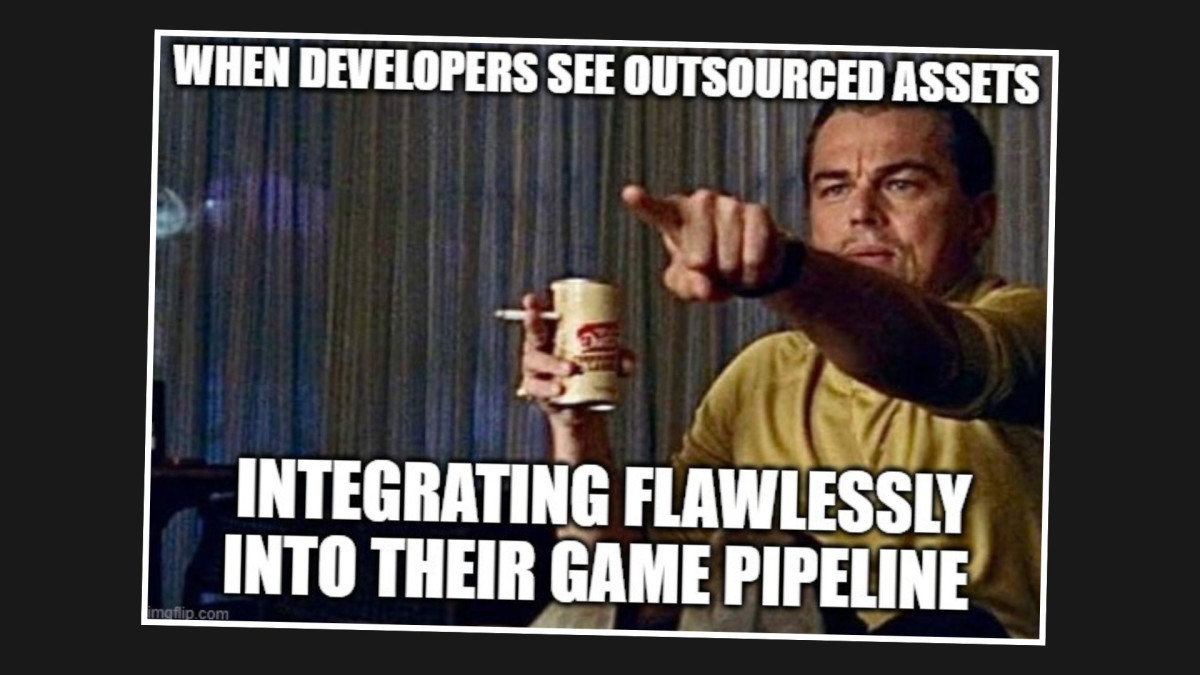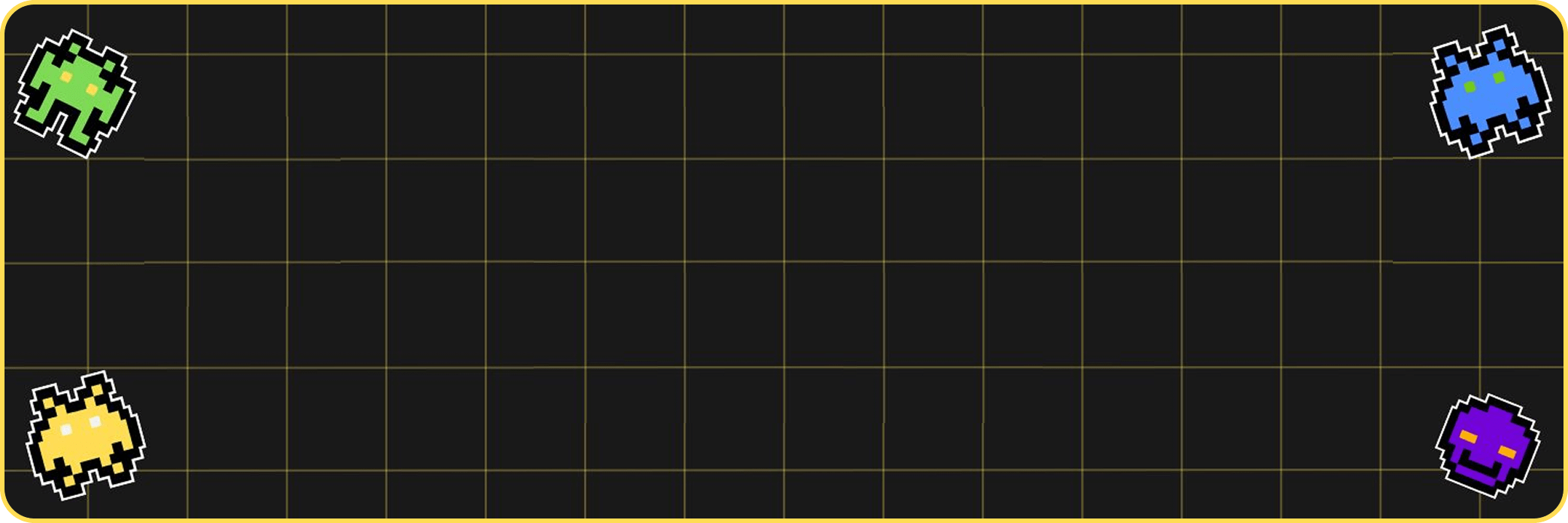Can car factory secrets really fix messy game art pipelines? Spoiler alert: they can. And it all starts with the Toyota Production System. Discover how Kaizen and Just-in-Time could change the way you run art production forever. Read the full story.
In this talk, we’ll share how the philosophy behind the Toyota Production System (TPS) can be applied to art production for games.
We’ll walk through how the TPS came to be and its four key principles: Kaizen (continuous improvement), Eliminating Waste, PDCA (Plan–Do–Check–Act), and Just-in-Time. Then, we’ll show how we adapt these principles in our art pipelines. Using real examples from projects with Bandai (Evangelion and Digimon), we’ll explain how clear pre-production, structured feedback loops, and smarter scheduling save time, reduce revisions, and give artists more freedom to focus on producing their best work.
TPS Origins: From Looms to Cars
Let’s go way back to the 1930s, when Toyota was just a small, barely known car manufacturer in Japan. At the time, Toyota wasn’t trying to outproduce Ford—they were trying to up the game. Kiichiro Toyoda, the son of the founder, was determined to revitalize the process and improve production efficiency.
Now, here’s the interesting part: Toyota didn’t just copy what everyone else was doing. They started thinking differently. Instead of just pushing out cars as fast as possible, they focused on reducing waste, improving quality, and getting the right parts at the right time. And, believe it or not, they found a way to outsmart their competition, all while making fewer mistakes.
Fun fact: Did you know the TPS philosophy actually grew out of Toyota fabric loom manufacturing? It’s true! Their experience in textile production led to efficiency breakthroughs that Toyota then applied to car manufacturing. Who knew looms could lead to lean cars?
What is TPS, and How It Can Power Creative Production
TPS isn’t just a set of rules—it’s a philosophy. Think of it as a game plan that helps you do the right things, the right way, at the right time. It’s about being smarter, leaner, and faster, but still delivering top-tier quality. So, TPS is essentially a Yoda for your production process: small, wise, and oh so powerful.
In art production, TPS means working smarter, not harder. Instead of just churning out assets and hoping they stick, it’s about creating better art and continuously improving the process. It’s not about putting limitations on the creativity of our artists—it’s about giving them structure and support so they can do their best work faster and with more focus. TPS helps us create a safe space for creativity while keeping things efficient.
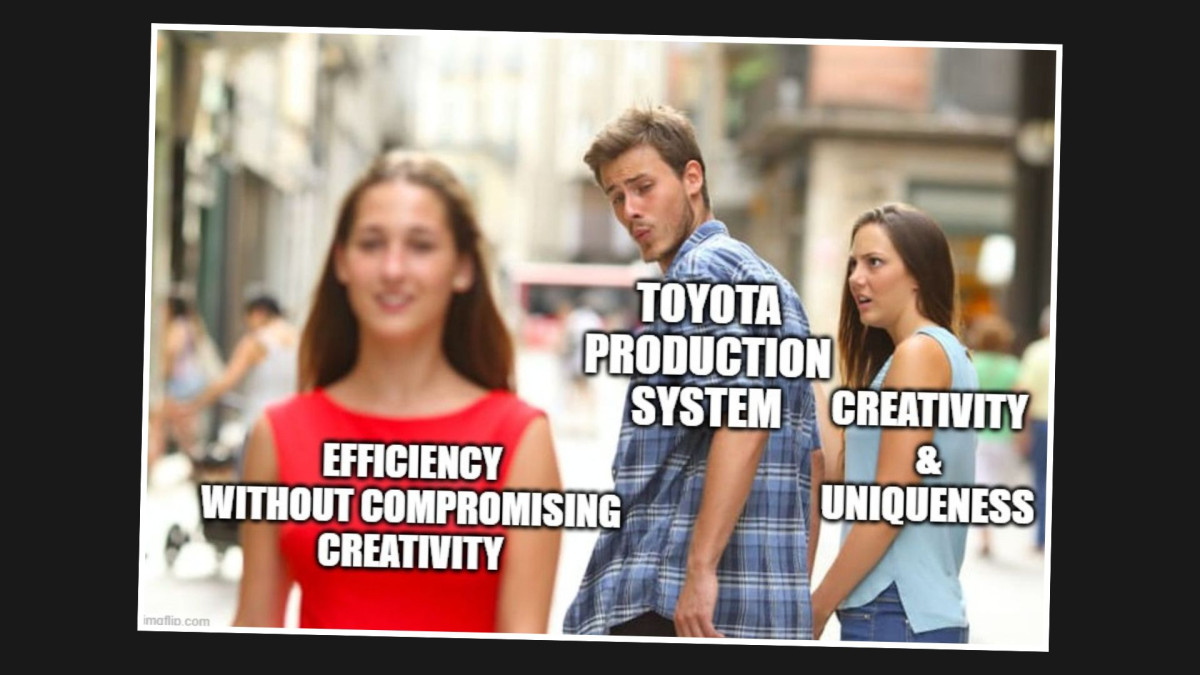
The Four Pillars of TPS
So far, we’ve learned that TPS helps us invigorate creativity while keeping efficiency at a steady level. Here are the four core principles we’ve adopted to achieve all that in our game art:
- Kaizen
- Eliminating Waste
- PDCA (Plan–Do–Check–Act)
- Just-in-Time (JIT).
These aren’t just buzzwords but actual practices that shape our day-to-day workflows. Let’s dive into them one by one and see how they translate directly into the realities of art production.
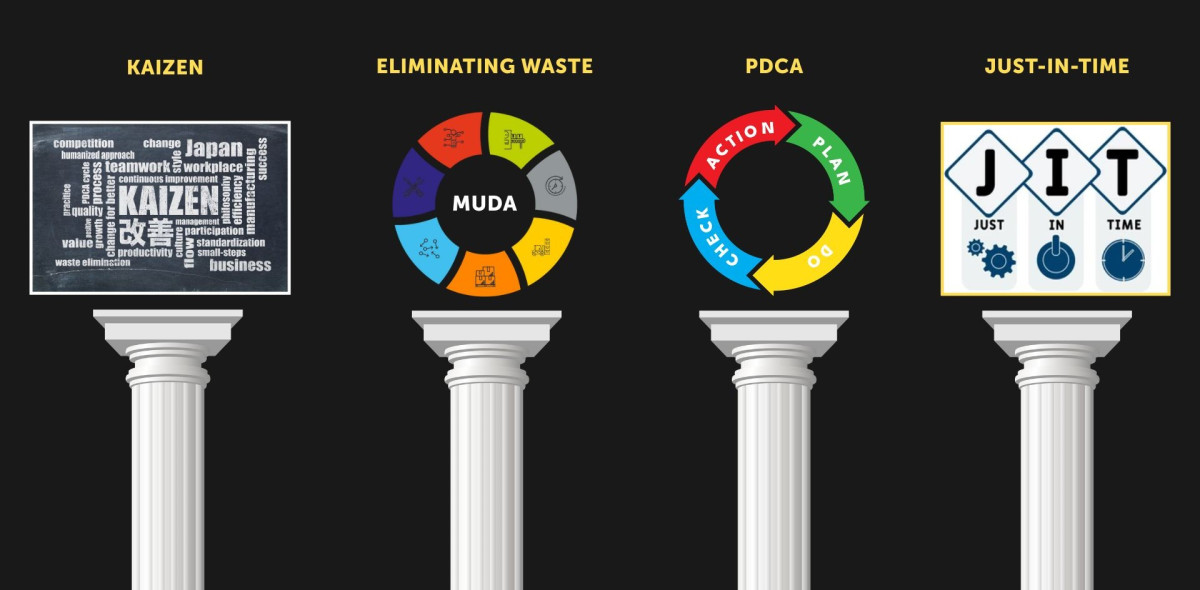
Kaizen: The Heartbeat of Continuous Improvement
Kaizen is all about constantly learning and getting better. It doesn’t demand perfection in one go. Instead, it encourages flexibility to improve just a tiny bit every day.
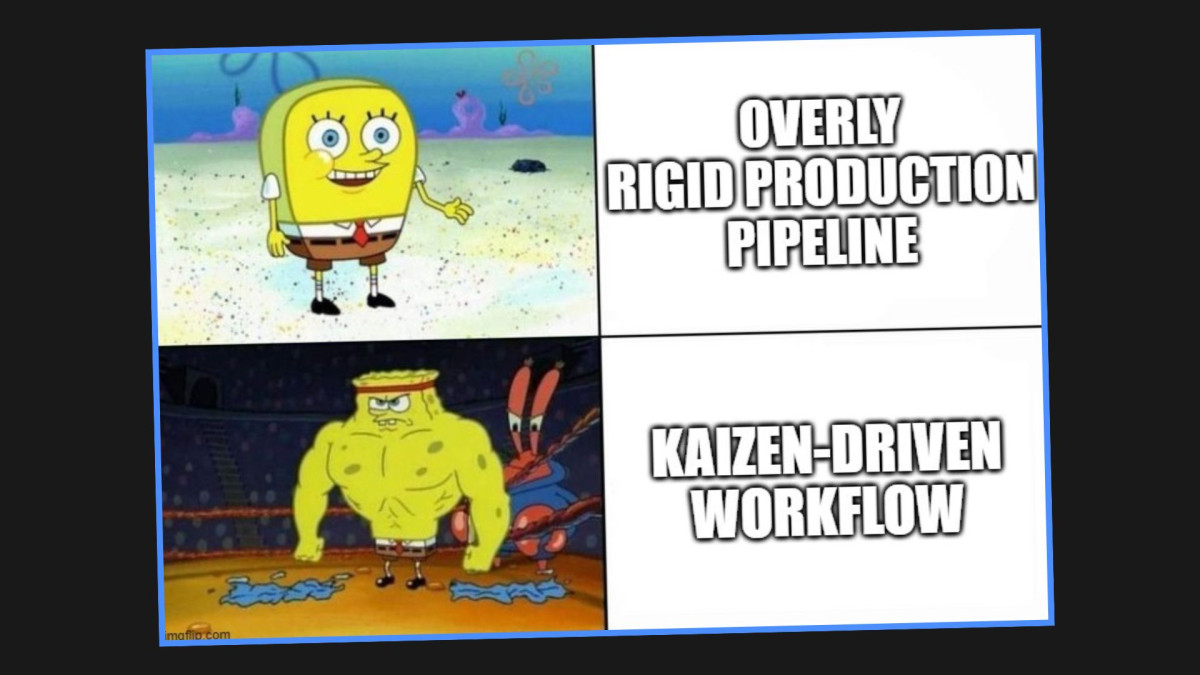
Think of it like leveling up in your favorite game. You don’t go from zero to hero in one move, right? It’s a process of small tweaks and upgrades that get you closer to where you want to be.
And here’s the beauty of Kaizen in art production: it doesn’t put a cap on creativity. Kaizen encourages us to refine our process with each iteration to better respond to our clients’ needs. Every feedback loop is a chance to refine the work and make it even better, while still allowing the creative process to flow freely.
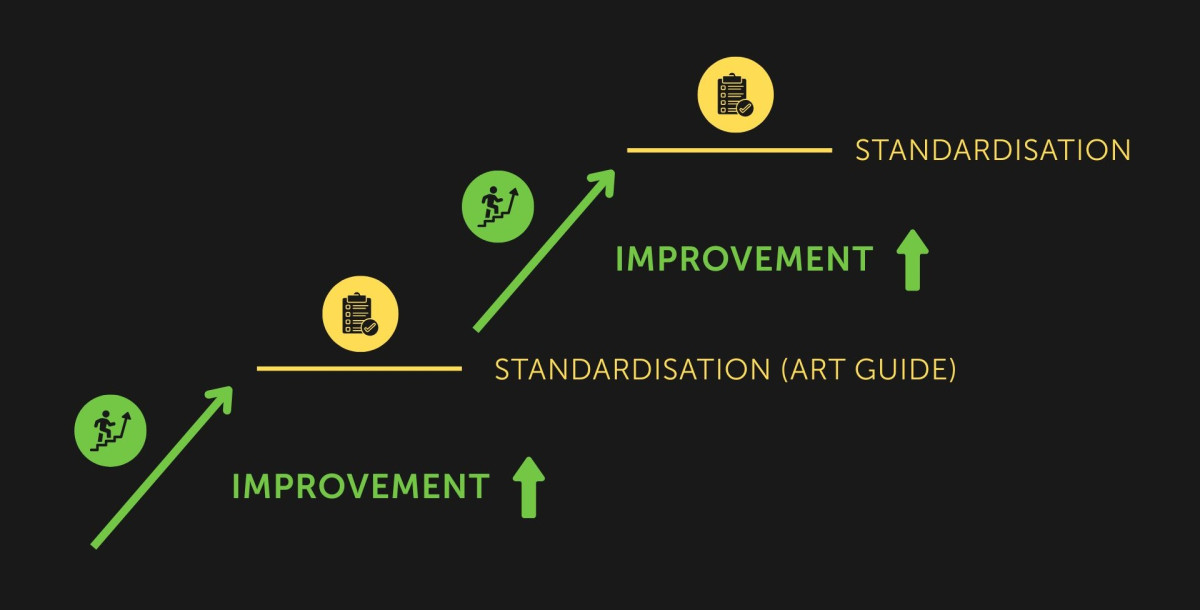
In art production, we apply Kaizen by constantly building on how we work with our clients and artists. Instead of forcing our artists, project managers, and everybody involved in the process to create perfect work instantly, we focus on improving bit by bit, learning from every piece of feedback, and improving each step of the way.
Eliminating Waste: Muda, Muri, and Mura
Now, let’s talk about waste. Not the fun kind of waste (like binge-watching your favorite series), but the kind of waste that makes your art production slow and inefficient.
In the language of TPS, this involves Muda (waste), Muri (overburden), and Mura (unevenness). Here’s what that means in the art world:
- Muda. Things that don’t add value, like drawing and redrawing because feedback was unclear.
- Muri. Asking too much from our artists, like demanding impossible deadlines.
- Mura. Inconsistency in the production process, like art styles that change halfway through the project.
These issues drain time, energy, and morale. We learned this firsthand on Evangelion, when unclear pre-production caused endless revisions. By reducing this waste, we give the artists freedom to focus on their creativity rather than having to constantly put out fires.
PDCA: The Art of Structured Iteration
Let’s talk about PDCA: Plan–Do–Check–Act. Sounds like a fancy process, right? Luckily, it’s not! PDCA is a simple way to make sure you’re always building on what you’ve learned.
Here’s how we roll with it in art production:
- Plan. We sit down with the client and figure out exactly what they’re looking for: the vibe, the story, and what the art should convey.
- Do. We create the first drafts, whether that be a character design, environment, or any other asset.
- Check. Time for some feedback! Did we hit the mark, or do we need to make a few adjustments?
- Act. We take that feedback, tweak as needed, and move forward with a better version.
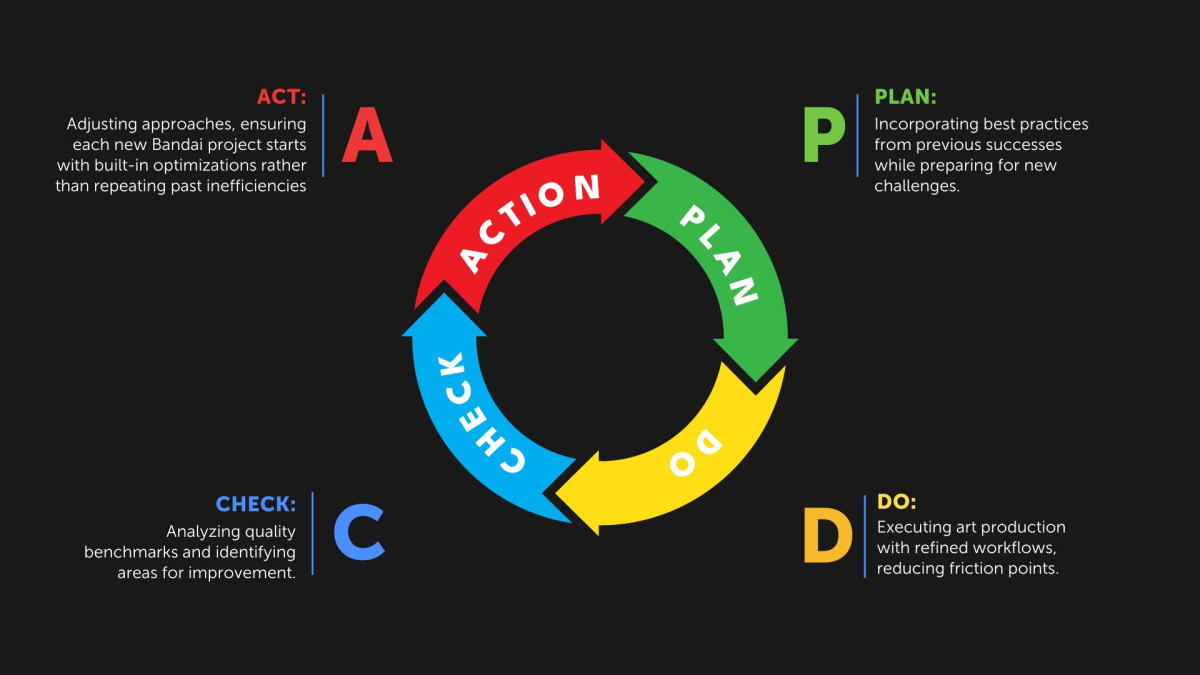
It’s like trying to beat the boss in a game. You plan your strategy, do your best, check what works, and act to get better every round.
So, the key here: PDCA ensures that creativity is never stifled. Instead of putting limitations on the artist, it allows us to iterate and improve on their ideas so we can take them to new levels of quality.
Just-in-Time: Delivering Art When It’s Needed
In art production, Just-in-Time (JIT) is all about delivering the right asset at the right time with no delays. Imagine trying to create an environment asset a week before it’s needed in the game. That’s too early, and it creates a risk of misalignment. Or imagine delivering late—that’s a disaster.
With Just-in-Time, we sync our deliveries with the game’s development schedule, ensuring the art arrives precisely when it’s needed most. This requires strong communication with artists, clients, and even localization teams, accounting for holidays, time zones, and feedback cycles. Done right, it eliminates bottlenecks and keeps everything moving smoothly.
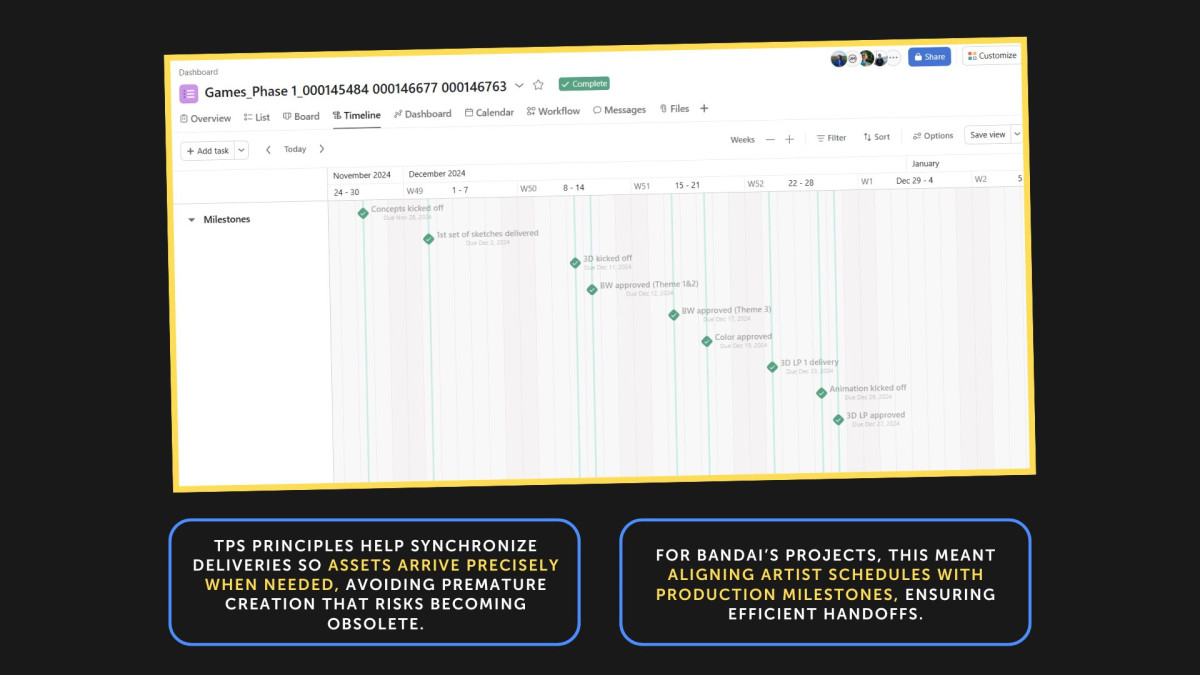
Lessons Learned: Evangelion vs. Digimon
When working with Bandai on Evangelion, we made a mistake. We received a task with a vague description, and we jumped in too fast. After several production steps and delivering a render, we learned from the IP holder that the character should be in a city. Our background didn’t fit at all. That misstep led to countless revisions and stalled the pipeline.
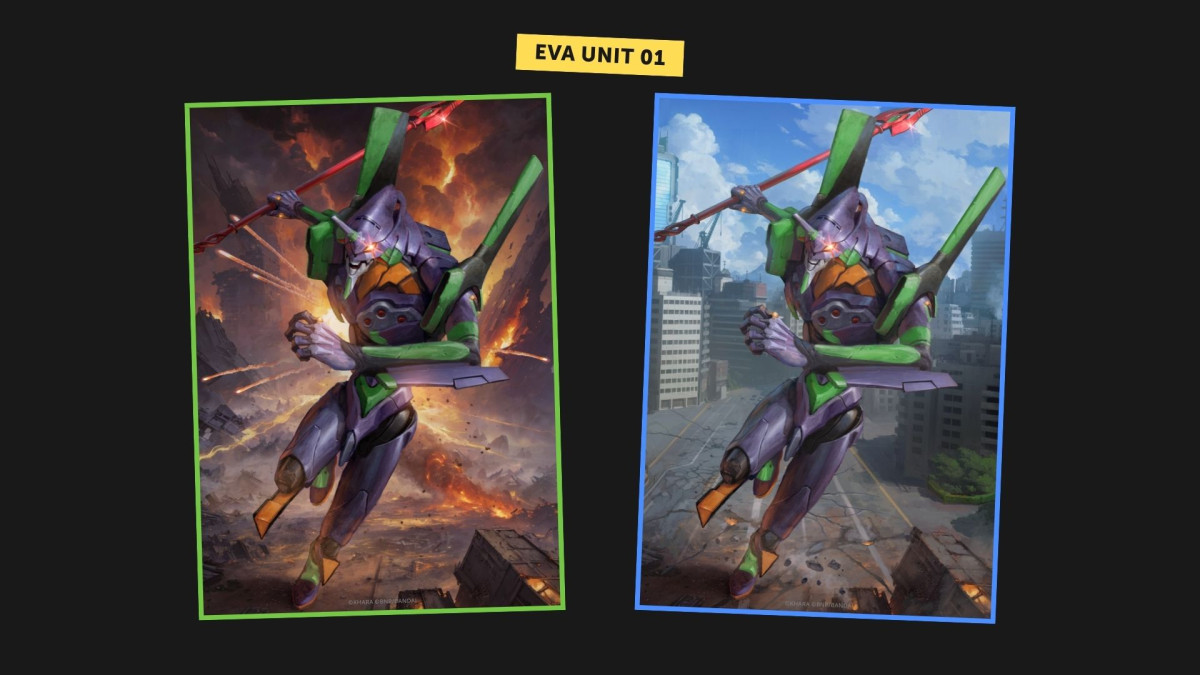
Later, on Digimon, we applied PDCA and pre-production discipline. We built broad reference boards and aligned on every detail—poses, powers, environments—and the result was smooth approvals with minimal feedback. Same type of project, completely different outcomes, all thanks to adopting TPS principles.
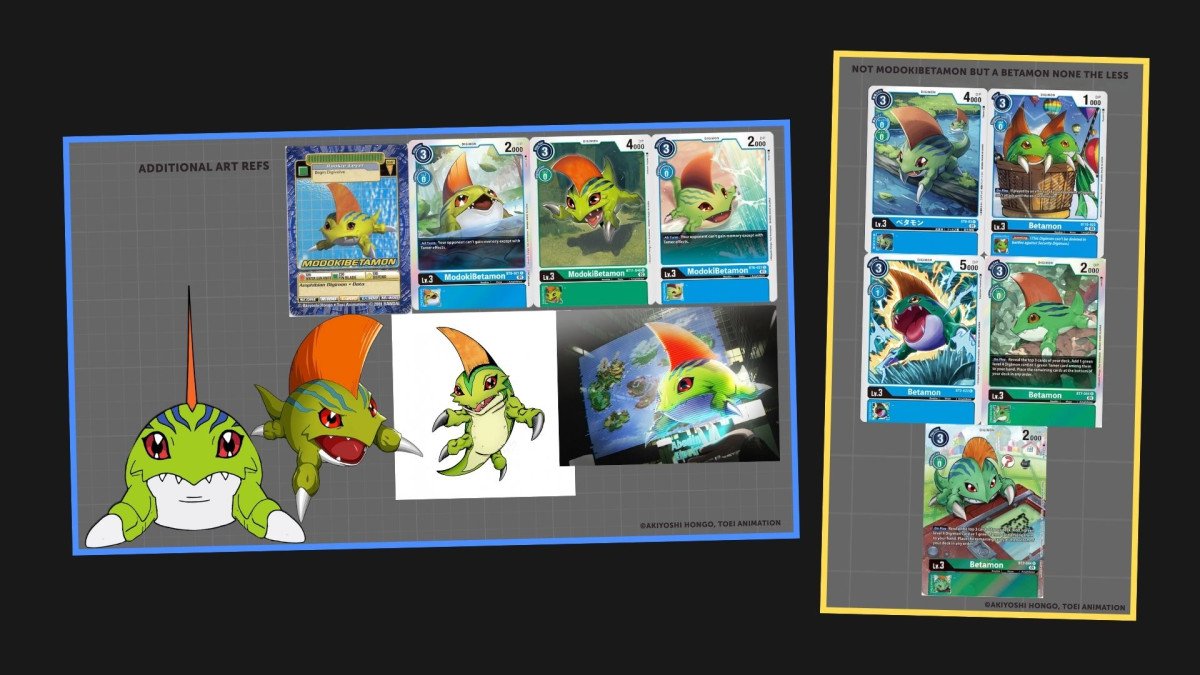
Why Does TPS Work for Art Production?
- TPS allows us to continuously improve, reduce waste, and ensure we’re delivering art when it’s needed, all while keeping the process smooth, efficient, and creative.
- TPS isn’t about restrictions—it’s about giving artists structure and support so they can focus on what they do best: creating art.
- TPS isn’t just for Toyota, but for art production too. Whether it’s refining character design, perfecting textures, or aligning the visual style, TPS helps us deliver top quality without the chaos. It’s all about working smarter, not harder, and creating better work over time.
For us, TPS in art production is not about putting restrictions on creativity. It’s about creating structure and support that allow artists to thrive, iterate, and deliver top-quality assets right when they’re needed. TPS may have been designed for car factories, but it works just as well in creative industries, helping us produce art efficiently and seamlessly.
